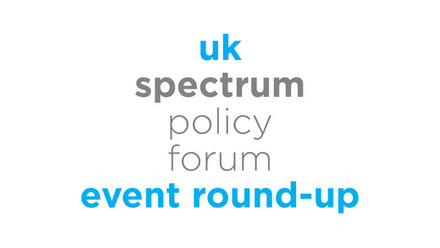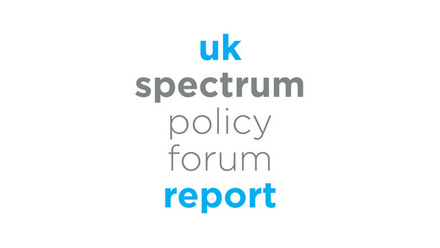UK SPF Cluster 3 Event Round-Up: SAL Forum and Spectrum Sandbox combined session
The UK Spectrum Policy Forum’s Cluster 3 recently hosted a combined session of the Shared Access Licence (SAL) Forum and the Spectrum Sandbox Workshop, bringing together stakeholders from Ofcom, the Department for Science, Innovation and Technology (DSIT), and various industry and academic partners. This session marked a significant step in the ongoing evolution of the UK’s spectrum management strategy, particularly in the context of private networks and dynamic spectrum access.
SAL Forum
The SAL Forum was established to explore and promote the use of Shared Access Licences, which were introduced in 2019. These licences were designed to support a range of 5G use cases by offering a simple, low-cost, and accessible framework for spectrum access. Over the past five years, the uptake of SALs has grown steadily, with the number of licences issued now exceeding initial expectations. This growth reflects a broader trend toward more flexible and user-driven spectrum management, particularly in the private sector.
Ofcom has made significant strides in implementing the commitments outlined in the SAL framework. These include the introduction of a user-led coordination process, updates to the clutter model, and improvements to licensing. Notably, the turnaround time for issuing licences has improved, and the introduction of an online application system has streamlined the user experience. Users can now apply, consult their licences, and make payments online, reducing administrative burdens and accelerating deployment timelines.
Technical enhancements have also played a crucial role. For example, changes to allow users to operate closer together—assuming synchronization—have significantly increased the available spectrum area. Measures such as increased power allowances for low-power users, the removal of terminal registration requirements for neutral host solutions, and greater flexibility in medium power deployments have all contributed to a more dynamic and responsive spectrum environment.
The most popular band for SAL use remains the 3.8–4.2 GHz range, which has been extensively mapped to support shared use. However, challenges remain, particularly in areas where existing licences impose protection requirements, such as those involving fixed links and earth stations. Ofcom is continuing to refine its approach, with updates to pricing models and the antenna library that are expected to further enhance coordination and spectrum efficiency.
ON-SIDE and Spectrum Sandboxes
One of the key themes of the session was the progress made in the spectrum sandbox projects, including Project ON-SIDE. These initiatives have provided a testing ground for innovations that are difficult to trial in day-to-day operations. The sandbox approach has enabled stakeholders to explore new technical and regulatory models, such as dynamic spectrum access (DSA), and to assess their practical implications in real-world scenarios. The outcomes of these projects are now informing broader policy discussions about how to create new incentives for spectrum use and how to enable more efficient and effective deployment of wireless networks.
The session also highlighted the technical depth of ongoing sandbox projects. For instance, Real Wireless has been exploring how to improve the current framework, which relies heavily on predictive models. In urban environments, where spectrum demand is high and predictions are less reliable, the team has been investigating how to better characterize and tolerate interference. By deploying microcells and measuring interference metrics, they aim to develop a database that can support more granular and efficient spectrum sharing.
Another innovative project presented by Queen Mary University of London (QMUL) focused on short-term and time-sensitive spectrum use, such as for outside broadcasts and event-based private 5G networks. Their proposed solution involves a new licensing model powered by a DSA server capable of real-time spectrum sensing and assignment. This “sense and avoid” approach allows for flexible and interference-aware spectrum use, potentially benefiting mobile network operators (MNOs) and other stakeholders. By combining machine learning with extensive simulation, the team has demonstrated how dynamic allocation can be both robust and economically advantageous, with potential benefits estimated at £80 million over 2025–2026.
Further contributions came from Durham University, which focused on the Upper 6 GHz band and the potential for sharing between mobile and Wi-Fi services. Their work also considered the needs of mobile scientific stations and ultrawide bandwidth radars. They monitored licensed spectrum use and identified significant gaps, particularly in rural areas, contributing to the digital divide. Another major issue was the inadequacy of existing propagation models, especially for frequencies below 10 GHz, which limited the effectiveness of simulation tools and systems analysis.
To address this, Durham conducted outdoor measurements to calibrate ray tracing tools and assess indoor entry losses. Although RF heads are not readily available in the Upper 6 GHz band, their adaptable equipment allowed for accurate measurements. These findings have been submitted to the ITU to inform updates to international recommendations.
Conclusion
Risks remain, particularly around the accuracy of databases and the location data of base stations. Inaccurate propagation models can lead to faulty interference assessments, especially when building materials are not properly accounted for. Spectrum sensing errors can distort occupancy data, and disincentivize investment in shared services.
Nonetheless, innovations such as frequency hopping signals show promise in improving signal quality. These deployments underscore the importance of engineering solutions that account for synchronization, interference, and throughput from the outset.
Overall, the combined session of the SAL Forum and Spectrum Sandbox Workshop showcased the UK’s commitment to fostering a more agile, user-centric spectrum ecosystem. By continuing to refine regulatory frameworks, embrace technical innovation, and support collaborative experimentation, the UK is positioning itself at the forefront of next-generation spectrum management.
Slides
Contact us

Tales Gaspar
Tales has a background in law and economics, with previous experience in the regulation of new technologies and infrastructure.

Sophie Greaves
Sophie Greaves is Associate Director for Digital Infrastructure at techUK, overseeing the Communications Infrastructure and Services Programme at techUK, and the UK Spectrum Policy Forum.





